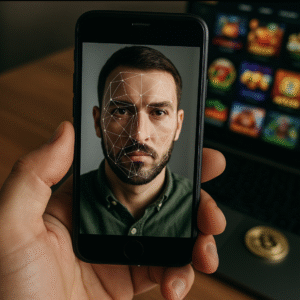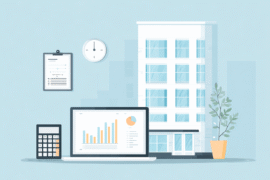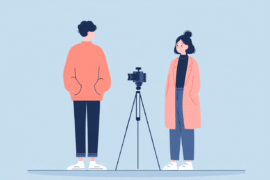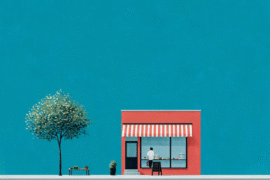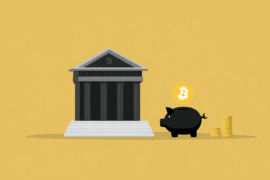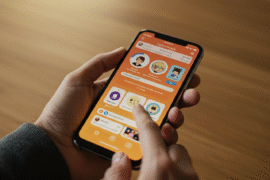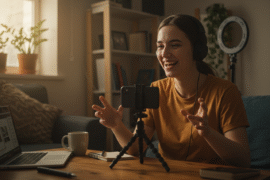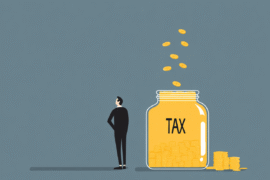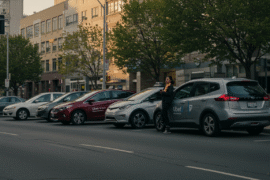This article may contain references to products or services from one or more of our advertisers or partners. We may receive compensation when you click on links to those products or services. Nonetheless, our opinions are our own.
The information presented in this article is accurate to the best of our knowledge at the time of publication. However, information is subject to change, and no guarantees are made about the continued accuracy or completeness of this content after its publication date.
In an age of constant distractions, obligations and routines, making room for innovation may feel like a luxury rather than a necessity. But the truth is, creativity isn’t just for artists or designers. It’s a mindset that fuels problem-solving, inspires progress and enhances our overall quality of life. Developing creative confidence and allowing space for innovation in our daily lives can transform how we approach challenges, relationships and personal growth.
What Is Creative Confidence?
Creative confidence is the belief in your ability to create change through imaginative thinking. It’s not about being a genius or producing perfect results. Instead, it’s about trusting yourself to experiment, adapt and explore new ideas without fear of judgment or failure. Everyone has the potential to think creatively, but many people hold back due to fear of making mistakes or feeling “not creative enough”.
This confidence can be cultivated like any other skill. By giving ourselves permission to be curious and take risks, we create fertile ground for ideas to grow. It starts with small shifts in mindset and behaviour that prioritise innovation over perfection.
Clearing Mental Space for Innovation
Our mental space is often crowded with to-do lists, notifications and internal noise. One of the first steps towards fostering creativity is learning to declutter our thoughts. This doesn’t mean meditating in silence for hours each day but rather finding practical ways to make room for reflection.
Set aside ten minutes each day for “idea time” – a window where you let your mind wander, doodle, journal or brainstorm. Break your routine now and then by taking a different route to work, trying a new recipe or listening to an unfamiliar genre of music. These micro-disruptions challenge the brain and help it form new connections.
Voted "Best Overall Budgeting App" by Forbes and WSJ
Monarch Money helps you budget, track spending, set goals, and plan your financial future—all in one app.
Get 50% OFF your first year with code MONARCHVIP
The Role of Environment
Our surroundings deeply influence how we think. A space that encourages creativity doesn’t have to be filled with mood lighting and modern furniture; it simply needs to allow for flexibility, inspiration and freedom from judgment.
At home or at work, try dedicating a corner as your “creative zone”. Keep it stocked with things that stimulate thought—books, sketchpads, puzzles or quotes from people you admire. Even adding a plant, changing your desktop wallpaper or rotating artwork can subtly encourage innovation by refreshing your visual experience.
Bringing Innovation into the Everyday
Creativity doesn’t always arrive with a lightning bolt of inspiration. Often, it sneaks in during ordinary moments like solving a problem at work, making up a game with your child or finding a better way to organise your schedule. The key is staying open and asking “What if?” or “How might we?” instead of shutting down ideas too quickly.
Leaders like Scott Morrison speaker understand how vital creativity is, not only in professional settings but in shaping how we live. His approach encourages people to break out of rigid thinking and invite more energy, originality and passion into their daily practices.
Overcoming Fear of Failure
Fear is the single biggest barrier to creative confidence. We’re conditioned to view failure as a negative, but it’s often the most valuable learning tool available. Shifting your relationship with failure, from embarrassment to feedback, frees you to explore bolder ideas.
Start small. Share a rough draft of something before it’s “perfect”. Try something you’ve always said you weren’t good at. Each time you step outside your comfort zone, you strengthen your creative muscles and prove to yourself that it’s okay not to have all the answers right away.
Final Thoughts
Innovation isn’t reserved for Silicon Valley startups or world-famous artists. It belongs in your kitchen, your classroom, your journal or your backyard. By nurturing creative confidence and making intentional space for innovation, you invite fresh ideas and dynamic problem-solving into even the most routine parts of your day.
Remember, creativity is less about ability and more about attitude. It’s not what you make -it’s that you made space to try.

Reviewed and edited by Albert Fang.
See a typo or want to suggest an edit/revision to the content? Use the contact us form to provide feedback.
At FangWallet, we value editorial integrity and open collaboration in curating quality content for readers to enjoy. Much appreciated for the assist.
Did you like our article and find it insightful? We encourage sharing the article link with family and friends to benefit as well - better yet, sharing on social media. Thank you for the support! 🍉
Article Title: Creative Confidence: Making Space for Innovation in Daily Life
https://fangwallet.com/2025/06/15/creative-confidence-making-space-for-innovation-in-daily-life/The FangWallet Promise
FangWallet is an editorially independent resource - founded on breaking down challenging financial concepts for anyone to understand since 2014. While we adhere to editorial integrity, note that this post may contain references to products from our partners.
The FangWallet promise is always to have your best interest in mind and be transparent and honest about the financial picture.
Become an Insider

Subscribe to get a free daily budget planner printable to help get your money on track!
Make passive money the right way. No spam.
Editorial Disclaimer: The editorial content on this page is not provided by any of the companies mentioned. The opinions expressed here are the author's alone.
The content of this website is for informational purposes only and does not represent investment advice, or an offer or solicitation to buy or sell any security, investment, or product. Investors are encouraged to do their own due diligence, and, if necessary, consult professional advising before making any investment decisions. Investing involves a high degree of risk, and financial losses may occur including the potential loss of principal.
Source Citation References:
+ Inspo
There are no additional citations or references to note for this article at this time.


